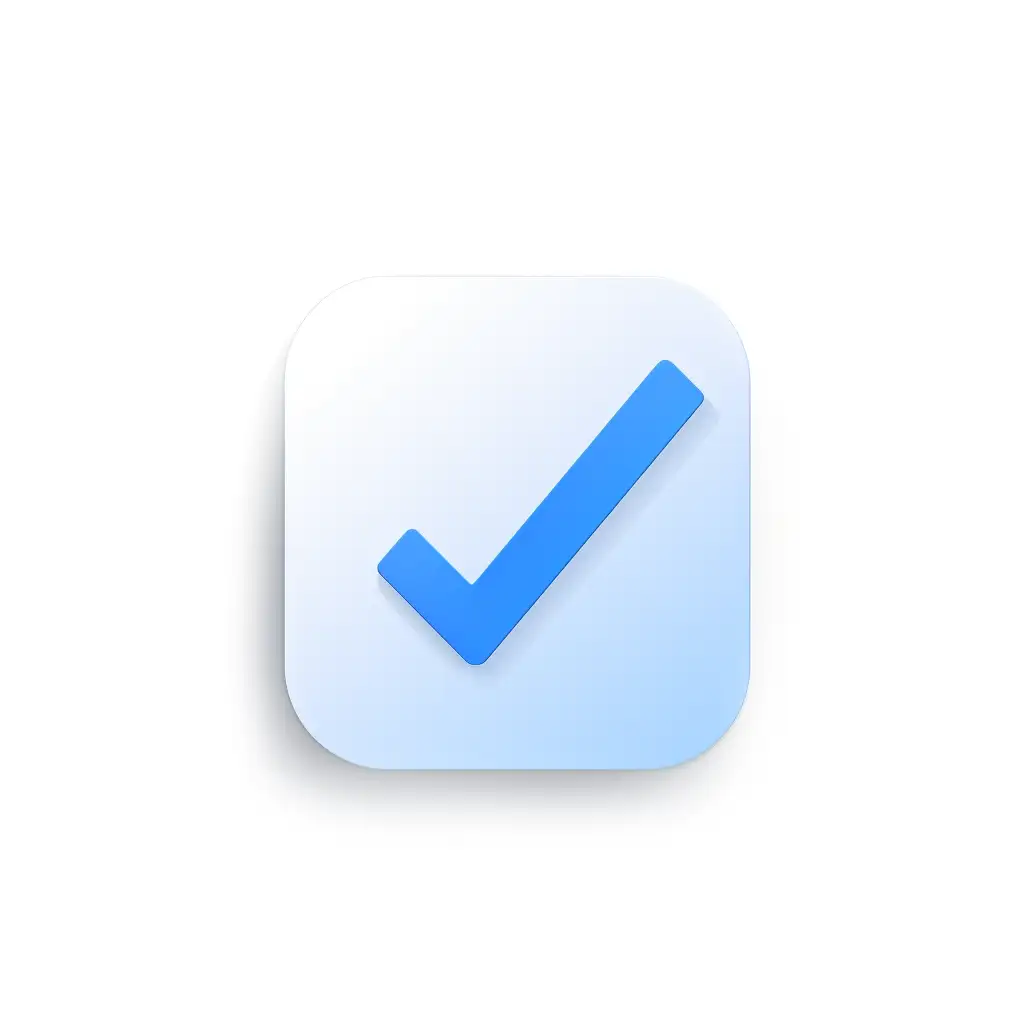Human Resources Management Software Explained

What Is Human Resources Management Software (HRMS)?
Human Resources Management Software (HRMS), also known as Human Resources Information Systems (HRIS) or Human Capital Management (HCM), represents a pivotal advancement in how businesses manage their most valuable asset: their people. This sophisticated technology integrates and automates the myriad of core functions and activities traditionally handled by HR departments. By encapsulating everything from recruiting and onboarding to payroll, benefits administration, and performance evaluations, HRMS stands as a comprehensive ecosystem designed to manage and enhance the employee lifecycle in its entirety.
In an era where efficiency and optimization are not just goals but necessities for competitive advantage, the role of HRMS cannot be overstated. These systems are engineered to streamline HR operations, minimize manual errors, and free up human resources professionals to focus on strategic initiatives that contribute directly to the growth and culture of the organization. The implementation of HRMS effectively transforms the operational dynamics within companies, fostering a more engaged, motivated, and well-managed workforce.
HRMS solutions come in various shapes and sizes, tailored to accommodate the unique needs of different organizations. Whether it’s a small startup looking to lay down the right HR foundations from the get-go or a multinational corporation seeking to consolidate its HR processes across global offices, HRMS platforms offer scalable, customizable functionality. This adaptability ensures that regardless of company size, industry, or geographic location, businesses can leverage HRMS to meet their specific requirements.
The evolution of HRMS has been marked by the incorporation of cutting-edge technologies such as artificial intelligence (AI), machine learning, and cloud computing. These innovations have enhanced the capabilities of HRMS, enabling predictive analytics for talent management, automated learning and development pathways, and real-time insights into workforce dynamics. As a result, HRMS not only simplifies administrative tasks but also becomes a strategic tool in talent acquisition, employee engagement, and retention strategies.
By automating routine tasks, HRMS frees HR professionals to focus on crafting policies and strategies that foster a positive workplace culture, enhance employee engagement, and drive performance. The data-driven insights provided by HRMS enable informed decision-making, helping organizations to identify trends, forecast future needs, and implement proactive HR solutions.
Key Features of HRMS
HRMS solutions are engineered with a broad spectrum of functionalities that cater to the multifaceted nature of HR management. These systems are designed not only to streamline operations but also to enhance the overall workplace environment by making processes more efficient and accessible. Let’s delve deeper into the core features that define HRMS:
Applicant Tracking System (ATS)
The Applicant Tracking System (ATS) is a cornerstone feature of HRMS, revolutionizing the recruitment process. It automates the end-to-end hiring workflow, from posting job openings on various platforms to sorting through applications based on predefined criteria, managing candidate communications, and scheduling interviews. This system significantly reduces the administrative burden on HR teams, enabling them to focus on engaging with potential hires and making informed recruitment decisions. ATS also enhances the candidate experience, ensuring that communication is consistent and feedback is timely, thus reflecting positively on the company’s brand.
Employee Self-Service Portal
The Employee Self-Service (ESS) portal is a transformative feature that democratizes access to HR-related information. By allowing employees to view and manage their personal data, benefits enrollments, and leave requests independently, ESS portals significantly reduce the number of routine inquiries HR departments receive, freeing them up for more strategic tasks. This feature promotes transparency and empowers employees by giving them direct control over their information, leading to increased satisfaction and engagement.
Payroll Management
Payroll Management systems are a critical component of HRMS, automating what is arguably one of the most complex and regulation-sensitive aspects of HR. This feature ensures that employees are compensated accurately and on time, calculates taxes and deductions according to the latest regulations, and generates necessary reports for compliance purposes. By automating payroll, companies minimize errors, avoid penalties for non-compliance, and ensure that the entire process is as seamless as possible for both HR staff and employees.
Performance Management
Performance Management systems within HRMS provide a structured framework for evaluating employee performance, setting objectives, and facilitating feedback. This feature moves beyond traditional annual reviews to support continuous performance monitoring and management. It allows for the setting of clear, measurable goals, real-time feedback, and personalized development plans. By fostering a culture of continuous improvement and recognition, performance management systems help align individual goals with company objectives, driving organizational success.
Learning and Development
The Learning and Development (L&D) feature of HRMS supports the ongoing education and growth of employees. It allows companies to plan, deliver, and track training programs and professional development activities. This feature supports a variety of learning formats, including online courses, in-person workshops, and webinars, making it easier for employees to access learning opportunities that fit their schedules and learning preferences. By investing in employees’ growth, organizations can enhance their skill sets, adapt to industry changes, and improve job satisfaction and retention rates.
Together, these key features of HRMS create a robust framework that supports the entire employee lifecycle, from recruitment to retirement. By automating administrative tasks, providing employees with self-service options, and offering tools for continuous development and performance management, HRMS plays a pivotal role in transforming HR operations into strategic drivers of business success.


The Benefits of Implementing HRMS
The adoption of Human Resources Management Software (HRMS) brings transformative benefits to organizations, impacting not just the HR department but the entire company culture and operational efficiency. Let’s explore these benefits in more detail:
Improved Data Management
One of the most immediate benefits of HRMS is the centralization of employee data. This consolidation makes it infinitely easier for HR professionals and management to access, update, and manage sensitive information securely. With all employee data stored in a single, secure database, the risks associated with data discrepancies, losses, or breaches are significantly minimized. This centralized approach also facilitates more accurate and faster decision-making, as all necessary information is readily available and can be analyzed with advanced HR analytics features to uncover insights about workforce trends, productivity, and more.
Enhanced Efficiency
HRMS significantly reduces the administrative burden on HR staff by automating routine tasks such as payroll processing, leave management, and benefits administration. This automation frees up HR professionals to devote more time to strategic initiatives like talent management, succession planning, and employee development programs. With the reduced need for manual intervention, HR departments can achieve higher levels of accuracy and efficiency, leading to cost savings and allowing for a greater focus on initiatives that contribute to the company’s strategic goals.
Better Compliance
Staying compliant with ever-changing local and federal regulations is a constant challenge for businesses. HRMS addresses this challenge by automating updates and reporting processes, ensuring that your organization remains compliant with labor laws, tax codes, and other regulatory requirements. The system can alert HR staff to upcoming changes in legislation and help adjust policies and processes accordingly. This proactive approach to compliance not only helps avoid costly legal penalties but also ensures that the company maintains a reputation as a responsible employer.
Increased Employee Engagement
By streamlining processes and making information more accessible to employees through self-service portals, HRMS significantly enhances the employee experience. Employees appreciate the autonomy to manage their personal data, submit leave requests, access payslips, and enroll in benefits online at their convenience. This empowerment can lead to higher levels of job satisfaction and engagement, as employees feel more in control of their work-life balance and more connected to the organization. Furthermore, features like performance management and learning and development within HRMS contribute to a culture of continuous feedback and growth, further enhancing employee engagement and retention.
Strategic HR Planning
Beyond the operational efficiencies, implementing HRMS enables more strategic HR planning. With comprehensive data analytics and reporting capabilities, HRMS provides insights into workforce dynamics, talent gaps, and training needs. This information allows organizations to plan more effectively for future workforce needs, develop targeted training programs, and implement succession planning strategies. By aligning HR strategies with business objectives, organizations can ensure they have the right talent in place to support growth and adapt to market changes.
Enhanced Recruitment and Onboarding
HRMS also revolutionizes the recruitment and onboarding process, making it more efficient and effective. Applicant tracking systems streamline the hiring process, from posting job openings to managing applications and conducting interviews. Once candidates are selected, HRMS facilitates a smooth onboarding process, ensuring new hires have a positive first experience with the company, complete necessary paperwork digitally, and start their new roles with all the resources they need.
Choosing the Right HRMS for Your Organization
Selecting the most appropriate Human Resources Management Software (HRMS) for your organization is a critical decision that can significantly influence your HR department’s effectiveness and the overall operational efficiency of your company. The right HRMS not only addresses your current needs but also anticipates future challenges and scales accordingly. To make an informed decision, consider the following essential factors:
Scalability
The chosen HRMS must be able to scale with your business as it grows and evolves. A scalable HRMS solution can accommodate an increasing number of employees, more complex organizational structures, and expanding HR functions without significant additional investments or disruptions. This means looking for software that offers various modules or add-ons that you can implement as your needs develop, ensuring that the system remains aligned with your business objectives over time.
User-Friendliness
The usability of an HRMS is paramount to its success within your organization. An intuitive, user-friendly interface ensures that employees at all levels can navigate the system with minimal training, leading to higher adoption rates and more efficient use of the software. User experience should be a top consideration, with a clean design, straightforward navigation, and accessible features that accommodate users with varying levels of technical proficiency. A system that is easy to use reduces resistance among staff, enhances the efficiency of HR operations, and ensures that you get the most value from your HRMS investment.
Integration Capabilities
In today’s digital ecosystem, the ability of your HRMS to integrate seamlessly with other tools and systems used by your organization is crucial. This includes everything from payroll and accounting software to project management and collaboration tools. Effective integration ensures a smooth flow of data across systems, eliminating the need for manual data entry, reducing errors, and providing a more comprehensive view of your operations. Before choosing an HRMS, assess its compatibility with your current software infrastructure and whether it supports standard data exchange formats and APIs for future integrations.
Support and Training
The level of support and training provided by the HRMS vendor is a critical factor in ensuring the successful implementation and ongoing use of the system. Look for providers that offer comprehensive support, including timely technical assistance, regular updates, and robust security measures. Additionally, assess the training resources available to ensure your team can fully leverage the HRMS features. This can include online tutorials, in-person training sessions, user manuals, and responsive customer service. Adequate support and training not only facilitate a smooth transition to the new system but also help maintain high user engagement over time.
Customization and Flexibility
An HRMS should offer a degree of customization to fit your specific business processes, workflows, and reporting requirements. The ability to tailor the software to your organization’s unique needs ensures that the HRMS can effectively support your HR strategy and policies. Flexibility in customization allows for adjustments as your business evolves, ensuring that the system remains relevant and valuable.
Data Security and Compliance
Given the sensitive nature of HR data, the security features of an HRMS are non-negotiable. Ensure that the software adheres to stringent data protection standards and complies with relevant privacy regulations (such as GDPR). The provider should offer robust security measures, including data encryption, secure access controls, and regular security audits, to protect your organization’s and employees’ data.
Cost-Effectiveness
Finally, consider the cost of the HRMS in relation to your budget and the return on investment it offers. This includes not only the initial purchase price but also ongoing costs for updates, support, and additional modules. A cost-effective HRMS solution provides the features and functionality you need at a price that makes sense for your business size and budget, ensuring a positive impact on your organization’s bottom line.

FAQ Section for HRMS
Q1: What is Human Resources Management Software (HRMS)?
A: HRMS is a digital solution designed to manage and optimize the human resources functions of an organization. It integrates various HR processes including recruitment, onboarding, payroll, employee performance management, and learning and development into a single, unified system, facilitating more efficient and effective HR management.
Q2: How does HRMS benefit an organization?
A: HRMS streamlines HR operations, improves data accuracy, enhances employee engagement, ensures compliance with regulations, and supports strategic HR planning. By automating routine tasks, it allows HR professionals to focus on more strategic initiatives, ultimately contributing to the organization’s growth and success.
Q3: Can small businesses benefit from HRMS?
A: Yes, small businesses can significantly benefit from HRMS. Many HRMS solutions are scalable and customizable, making them suitable for businesses of all sizes. For small businesses, HRMS can streamline operations, reduce administrative burden, and improve compliance, setting a strong foundation for growth.
Q4: Is HRMS difficult to implement?
A: The complexity of HRMS implementation varies depending on the size of the organization and the specific software chosen. However, many providers offer comprehensive support and training to ensure a smooth transition. Proper planning, clear communication, and employee training are key to successful HRMS implementation.
Q5: How does HRMS handle data security and privacy?
A: Reputable HRMS solutions are built with robust security features to protect sensitive HR data. This includes encryption, secure data storage, access controls, and regular security audits. Compliance with privacy regulations like GDPR is also a priority, ensuring that employee data is handled responsibly.
Q6: Can HRMS integrate with other software?
A: Yes, most HRMS solutions are designed to integrate with other business software such as accounting, payroll, and project management tools. This interoperability allows for seamless data flow between systems, improving efficiency and accuracy across the organization.
Q7: What should I look for when choosing an HRMS?
A: When selecting an HRMS, consider factors such as scalability, user-friendliness, integration capabilities, support and training, customization options, security features, and cost. Assessing your organization’s specific needs and future growth plans will help guide your decision.
Q8: How often do HRMS providers update their software?
A: The frequency of updates varies by provider, but most offer regular updates to introduce new features, enhance security, and improve user experience. It’s important to choose a provider committed to continuous improvement and support.
Q9: Can HRMS support remote and hybrid work models?
A: Absolutely. HRMS is well-suited to support remote and hybrid work models by providing online access to HR functions and data. This ensures that employees, regardless of their location, can access the information and services they need.
Q10: What is the future of HRMS?
A: The future of HRMS is likely to see even greater integration of artificial intelligence, machine learning, and predictive analytics, offering deeper insights into workforce management and strategic planning. Additionally, a focus on enhancing employee experience through more personalized and engaging HR services is expected.
Disclaimer: The content provided on this webpage is for informational purposes only and is not intended to be a substitute for professional advice. While we strive to ensure the accuracy and timeliness of the information presented here, the details may change over time or vary in different jurisdictions. Therefore, we do not guarantee the completeness, reliability, or absolute accuracy of this information. The information on this page should not be used as a basis for making legal, financial, or any other key decisions. We strongly advise consulting with a qualified professional or expert in the relevant field for specific advice, guidance, or services. By using this webpage, you acknowledge that the information is offered “as is” and that we are not liable for any errors, omissions, or inaccuracies in the content, nor for any actions taken based on the information provided. We shall not be held liable for any direct, indirect, incidental, consequential, or punitive damages arising out of your access to, use of, or reliance on any content on this page.
Trusted By
Trusted by 3.2M+ Employees: 21 Years of Service Across Startups to Fortune 500 Enterprises
Join our ever-growing community of satisfied customers today and experience the unparalleled benefits of TimeTrex.










Strength In Numbers
Join The Companies Already Benefiting From TimeTrex
Time To Clock-In
Start your 30-day free trial!
Experience the Ultimate Workforce Solution and Revolutionize Your Business Today
- Eliminate Errors
- Simple & Easy To Use
- Real-time Reporting

Saving businesses time and money through better workforce management since 2003.
Copyright © 2025 TimeTrex. All Rights Reserved.

